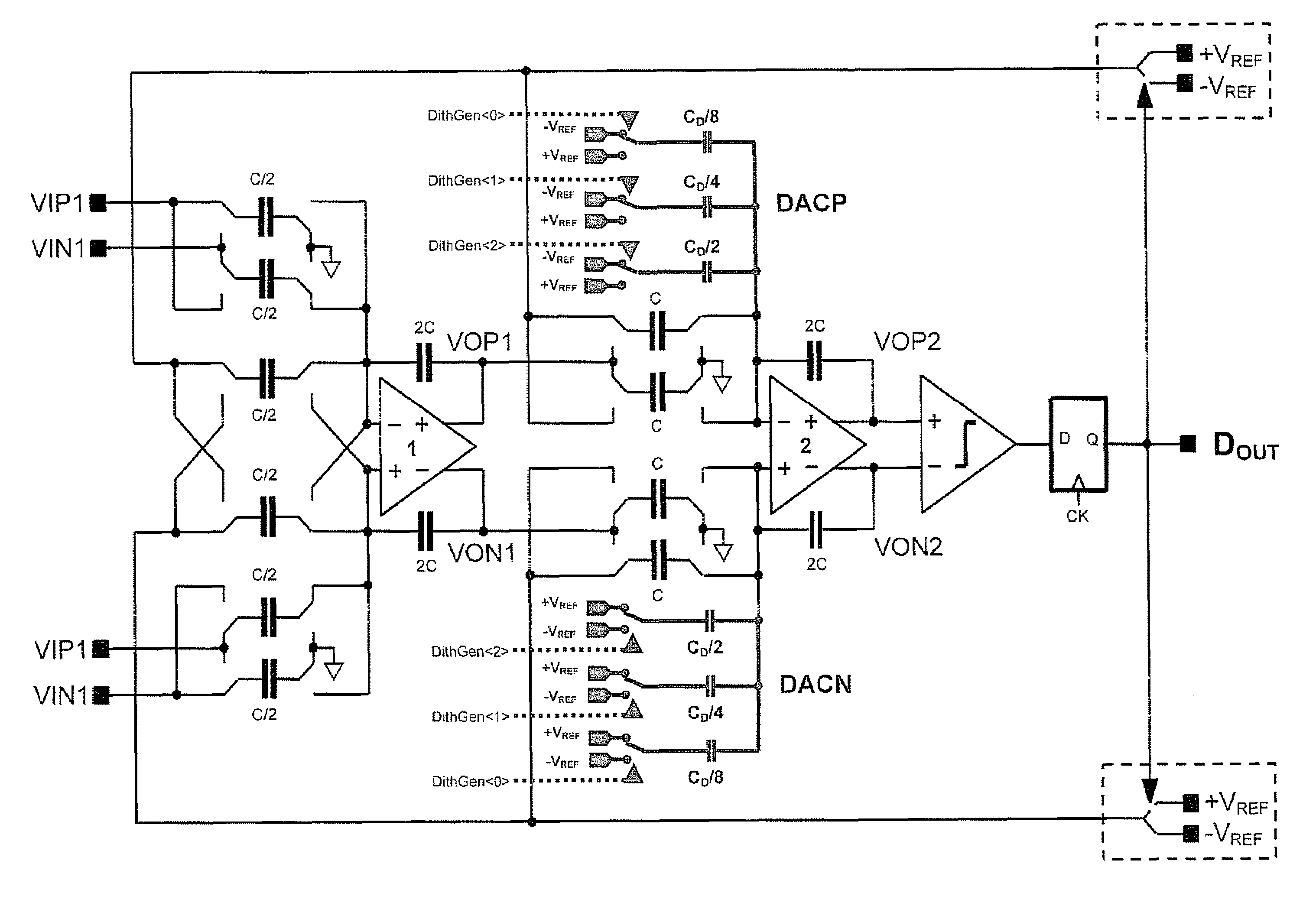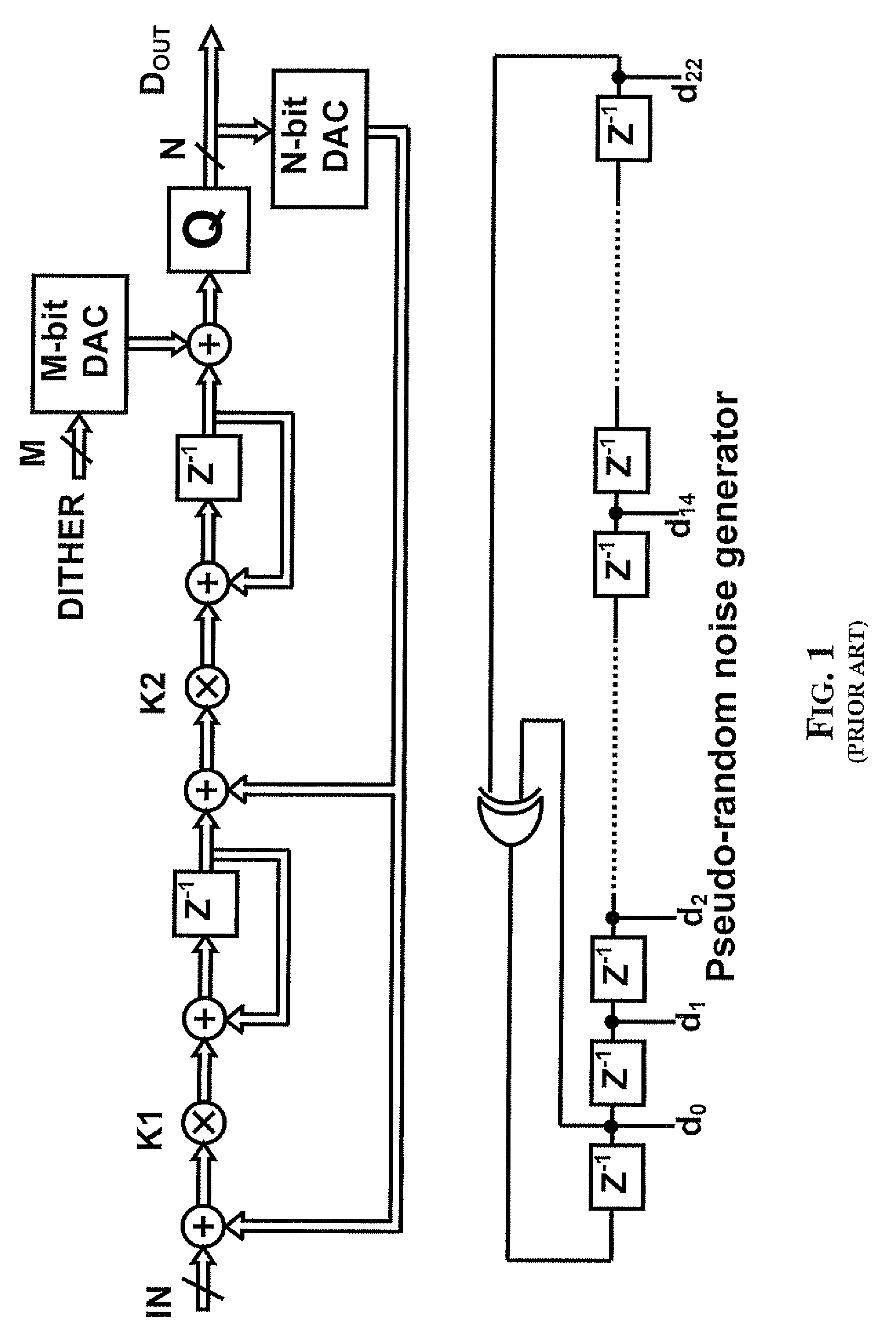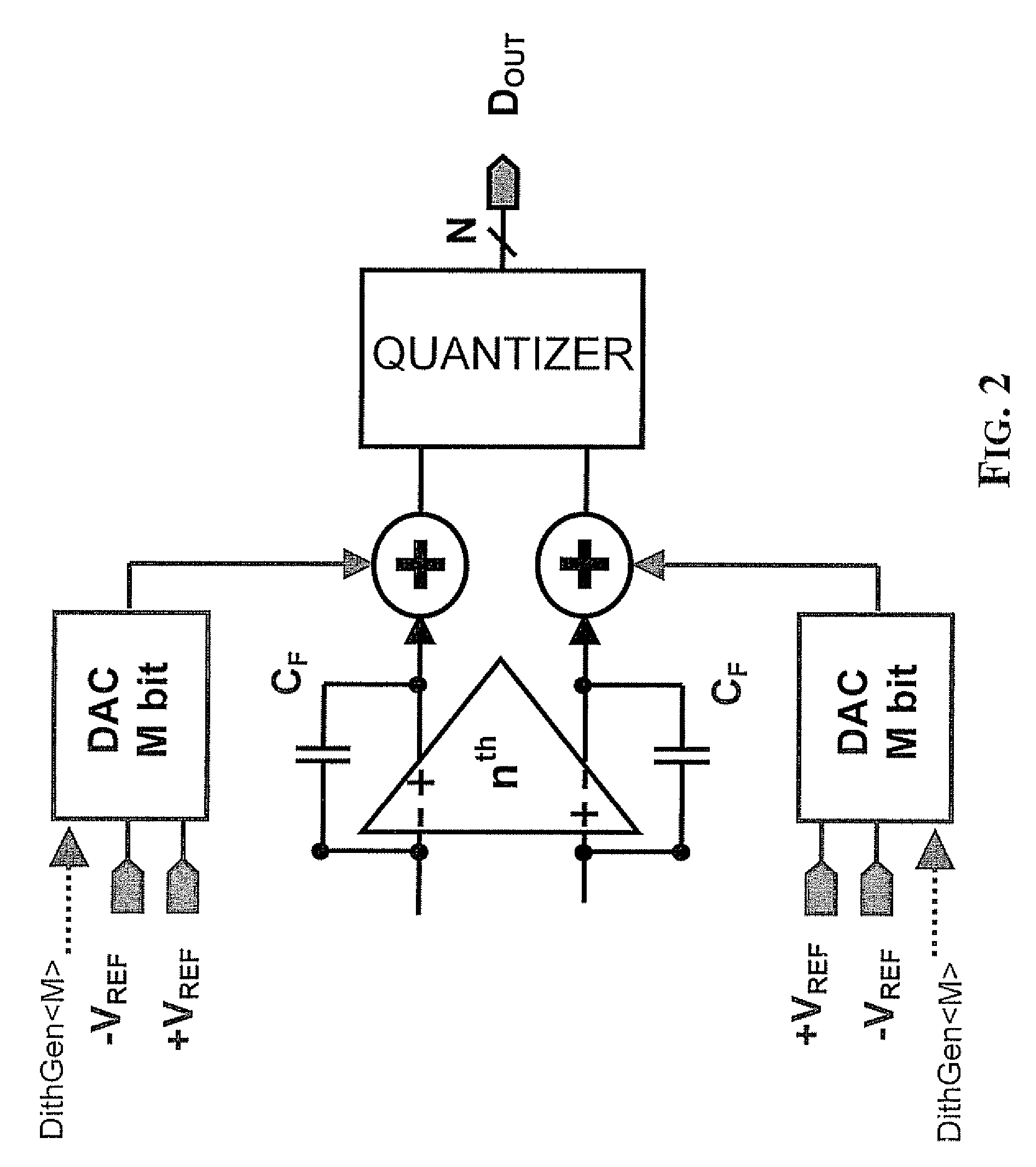Method of adding a dither signal in output to the last integrator of a sigma-delta converter and relative sigma-delta converter
a technology of sigma-delta converter and dither signal, which is applied in the field of adding dither signal to output of the last integrator of sigma-delta converter, can solve the problems of affecting the operation of the converter, and being susceptible to demodulation in the baseband, so as to save a relatively large silicon area
- Summary
- Abstract
- Description
- Claims
- Application Information
AI Technical Summary
Benefits of technology
Problems solved by technology
Method used
Image
Examples
Embodiment Construction
[0031]A basic scheme of the last integrator of a multi-bit differential sigma-delta converter in accordance with the present invention is depicted in FIG. 3. Differently from the circuit of FIG. 2, this architecture does not include adders in cascade with the integrator. Nevertheless, an amplified analog replica of an externally generated digital dither signal is effectively added to the output of the integrator.
[0032]According to the method of the invention, the dither signal is added to the output of the last integrator by feeding it to the virtual ground node of the integrator. In a differential integrator, this may be done by feeding an analog replica of the dither signal to both inputs of the integrator. In a single-ended converter, this is done by feeding the analog dither signal to the input of the amplifier to which the integrating capacitor 2C is connected, as shown in FIG. 6.
[0033]According to another aspect of the invention, each digital-to-analog converter DAC may be con...
PUM
 Login to View More
Login to View More Abstract
Description
Claims
Application Information
 Login to View More
Login to View More - R&D
- Intellectual Property
- Life Sciences
- Materials
- Tech Scout
- Unparalleled Data Quality
- Higher Quality Content
- 60% Fewer Hallucinations
Browse by: Latest US Patents, China's latest patents, Technical Efficacy Thesaurus, Application Domain, Technology Topic, Popular Technical Reports.
© 2025 PatSnap. All rights reserved.Legal|Privacy policy|Modern Slavery Act Transparency Statement|Sitemap|About US| Contact US: help@patsnap.com



